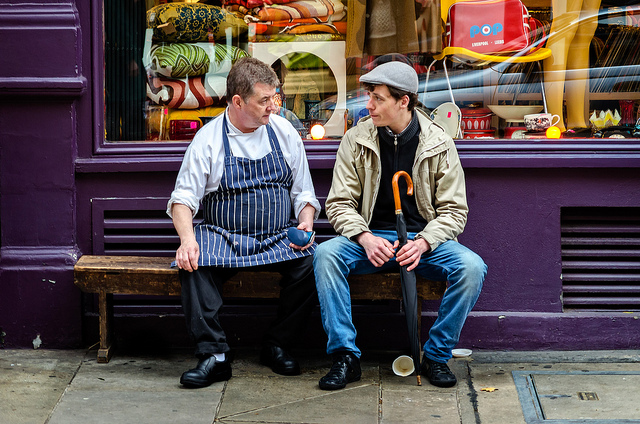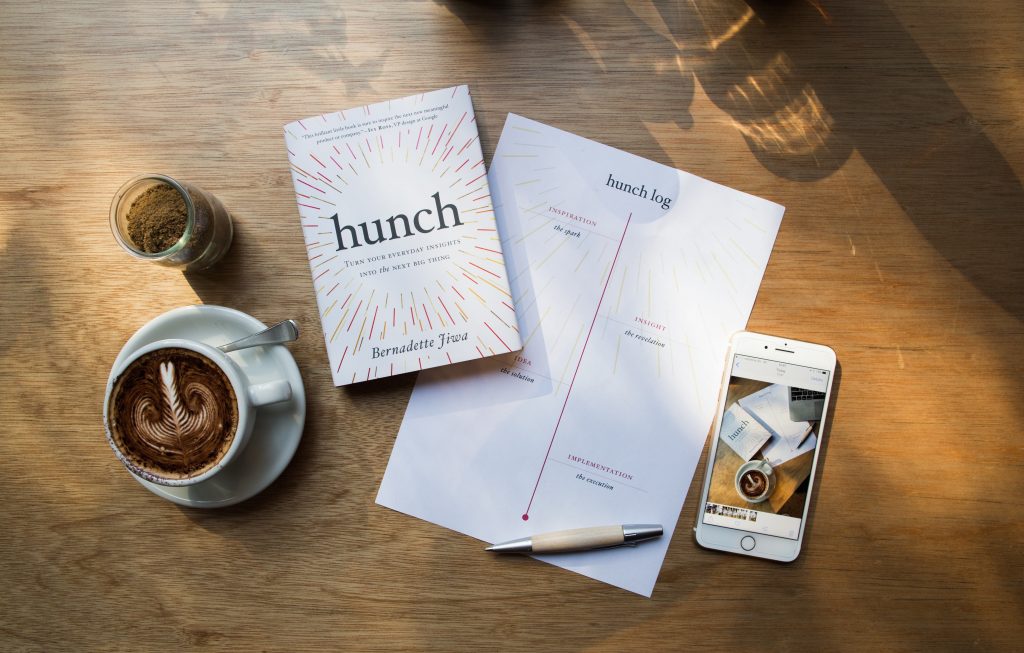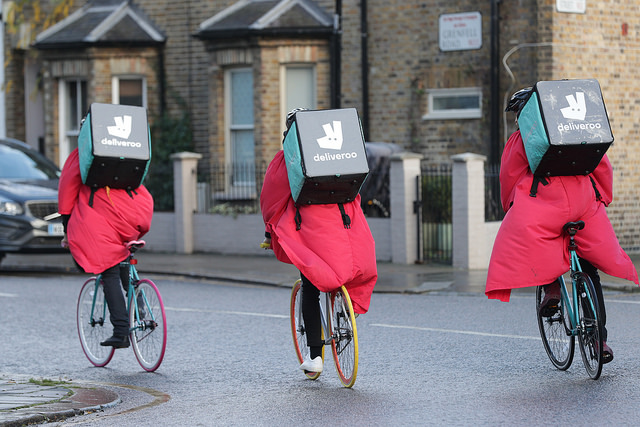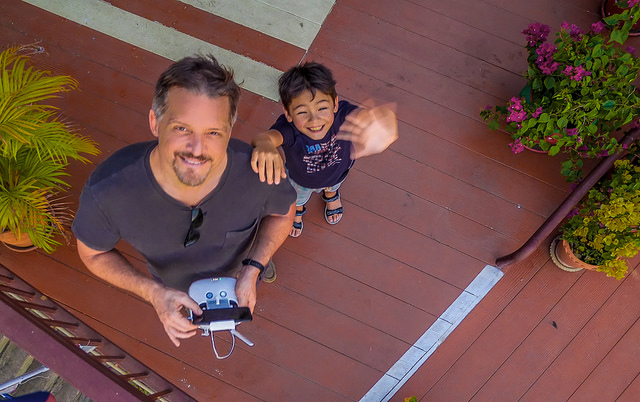Unlock the Magic in Your Story Now
Get the Free 20 questions to Ask Before Launching Your Idea workbook when you sign up for occasional updates.
Get the Free 20 questions to Ask Before Launching Your Idea workbook when you sign up for occasional updates.
Articles filed in: Strategy
What Successful Marketers Do
filed in Marketing, News, Strategy
 The restauranteur wants people to feel at home when they dine at his cafe. He furnishes it with a communal table filled with jars of decadent preserves. Diners help themselves to as much as they want without having to ask the wait staff for more.
The restauranteur wants people to feel at home when they dine at his cafe. He furnishes it with a communal table filled with jars of decadent preserves. Diners help themselves to as much as they want without having to ask the wait staff for more.
The technology company wants to make women feel more at ease when they’re buying big ticket electrical items. They understand smells affect consumer behaviour, so orange and vanilla scent is diffused throughout their stores.
The fitness brand knows people are more likely to exercise when it feels less like work. They create an immersive group experience that makes exercising more pleasurable and fun, so members return more often.
Successful marketers act with intention. They deliberately connect strategy and tactics to the outcomes they, and more importantly, their customers, want to achieve. They begin with the end in mind and work backwards.
We have to change how people feel before we can hope to change what they do. We often try to skip this step. It takes courage and time to deliberately connect your brand story to a well thought through strategy—but it’s worth the effort. What end do you have in mind?
Image by Enrique Céspedes
You Know More Than You Think
filed in Innovation, Strategy
 We could be forgiven for thinking that facts and figures communicate the whole truth and hold the keys to unlocking the value in every future opportunity. New digital tools and technologies not only give us more information about the world around us and the people in it but also help us to know more about ourselves. We can literally monitor every step we take and every calorie we consume. The great hope is that if we can gather enough data, we will have the power to change the things we want to change—and that we can do it without having to face the fear of uncertainty.
We could be forgiven for thinking that facts and figures communicate the whole truth and hold the keys to unlocking the value in every future opportunity. New digital tools and technologies not only give us more information about the world around us and the people in it but also help us to know more about ourselves. We can literally monitor every step we take and every calorie we consume. The great hope is that if we can gather enough data, we will have the power to change the things we want to change—and that we can do it without having to face the fear of uncertainty.
Data—that which we can easily measure—is supposed to make us smarter, and maybe it can, but I’d argue that it doesn’t always make us wiser. Many of our actions and reactions can be observed and quantified, but that data doesn’t always expose the truth about why we take or have them. If it did, we would have found a way to stop people smoking cigarettes, overeating, gambling and drinking to excess. All of the health data that scientists use to persuade us to change our behaviour doesn’t necessarily have any effect. Hard facts tell only part of the story.
The Power Of Intuition In A Data-Driven World
Things are no different when it comes to evaluating the potential of ideas. Where was the data that predicted the need for and subsequent success of Google, Facebook and the iPhone, or the decline of Kodak, BlackBerry and orange juice? Which analyst forecast the 250 per cent increase in almond milk sales in the US over the past five years? Who anticipated that yoga pants would unseat jeans in popular culture, to spawn an active-wear revolution that will help the sports-apparel market be worth a predicted $178 billion globally by 2019? And what about colouring books for adults, with an estimated 12 million sold in 2015 in the US alone – who saw that juggernaut coming? When it comes to making predictions about which ideas will fly, we tend to forget that we can only use the information we have at hand about the past or the present to make a judgement call or prediction about the future. We don’t (or can’t) know the significance of things we have no information about, or haven’t yet thought to measure, and can’t possibly know for sure.
And yet we crave certainty, so we keep amassing and putting our faith in data. That faith has been fractured and then shattered by recent political events. According to Steve Lohr and Natasha Singer of The New York Times, all the data (and there was a lot of it) put Hillary Clinton’s chances of winning the 2016 US presidential election at between 70 and 99 per cent. As we know, these forecasts made by experts who had pored over every single possible data point turned out to be far from reliable. Lohr and Singer report ‘a far-reaching change across industries that have increasingly become obsessed with data, the value of it and the potential to mine it for cost-saving and profit-making insights’. However, they also remind us that, ‘data science is a technology advance with trade-offs. It can see things as never before, but also can be a blunt instrument, missing context and nuance.’ This proved to be true in the case of the 2016 presidential election. It was easy to measure how people said they would vote, but far harder to gauge what was in people’s hearts.
Not all of the useful information we can gather can be precisely measured and carefully graphed. What we observe in the everyday about what’s working and what’s not, why this is chosen, and that is rejected, and how the world still turns when people say one thing and do another, can lead to the seemingly insignificant insights that change everything. When we are creating ideas that will exist in the world, we must take that world into account—all of it, not just a logical, thin-sliced or convenient view of it.
We instinctively understand more than we give ourselves credit for and we didn’t learn it all from Britannica, Wikipedia or Google. Every day, we have access to vast amounts of information that we unconsciously collect. While this other kind of data is subjective, it’s still useful, and it can be put to work. If we train ourselves to become more observant, if we pay attention—to our surroundings, to other people, to what’s happening that shouldn’t be, or what’s not happening, that should be—our most mundane experiences can fuel our boldest and most brilliant ideas.
Excerpted from my new book Hunch: Turn Your Everyday Insights Into The Next Big Thing which goes on sale in the US today.
Image by Hernán Piñera.
Bridging The Scarcity Gap
filed in Innovation, Strategy
 The man riding in the lift with me hit the button for the highest, and arguably the best floor in the hotel. I remarked that he must have great views from there. He shrugged his shoulders, then started to complain about his inability to open the windows to let the fresh air in.
The man riding in the lift with me hit the button for the highest, and arguably the best floor in the hotel. I remarked that he must have great views from there. He shrugged his shoulders, then started to complain about his inability to open the windows to let the fresh air in.
The scarcity worldview abounds. You’ll hear it articulated in conversations all around you. Understanding how to bridge the scarcity gap creates opportunities for you and your business day in and day out. The data is in the stories.
How do your customers believe their lives could be better and what can you do about it?
My new book Hunch: Turn Your Everyday Insights Into The Next Big Thing is available now in the UK & Australia.
Image by Garry Knight.
Where Will Your Next Big Idea Come From?
filed in Innovation, Strategy
 A few weeks before Hillary Clinton was defeated in the US presidental election I met a guy selling hats emblazoned with both candidates’ names outside the Rockerfeller Center in New York.
A few weeks before Hillary Clinton was defeated in the US presidental election I met a guy selling hats emblazoned with both candidates’ names outside the Rockerfeller Center in New York.
‘There will be a big upset in this election. Trump hats are selling like hotcakes,’ he said. It was hard to believe. Just the day before at a behavioural economics conference in Manhattan the academics and experts who had crunched every data point predicted exactly the opposite. The data showed Hillary was on track. But the sales in Trump hats didn’t lie. The data worth paying attention to was closer to home. It was in the stories of the people on the streets of towns where those who wrote the algorithms didn’t live and work.
In our digitally, data-stamped world, facts are king and intuition gets a bad rap. Author Michael Lewis describes the ‘powerful trend to mistrust human intuition and defer to algorithms’ that came about as a result of the work of scientists in the field of behavioural economics. The irony, of course, is that scientists too start out with nothing more than a hunch about what’s worth investigating further. Even those whose job it is to demonstrate proof start out not knowing for sure.
Things are no different when it comes to innovating in the commercial world. Where was the data that predicted the need for and subsequent success of Google, Facebook and the iPhone, or the decline of Kodak, BlackBerry and orange juice? Which analyst forecast the 250 per cent increase in almond milk sales in the US over the past five years? Who anticipated that yoga pants would unseat jeans in popular culture, to spawn an active-wear revolution that will help the sports-apparel market be worth a predicted $178 billion globally by 2019? And what about colouring books for adults, with an estimated 12 million sold in 2015 in the US alone – who saw that juggernaut coming? When it comes to making predictions about which ideas will fly, we tend to forget that we can only use the information we have at hand about the past or the present to make a judgement call or prediction about the future. We don’t (or can’t) know the significance of things we have no information about, or haven’t yet thought to measure, and can’t possibly know for sure. Data may be able to tell us what people do and how they do it, but critically, not why they do it.
Intuition, on the other hand, enables us to tap into our shared human experience to reveal a fundamental truth about what it is people want and need. Often there is no reliable data to go on—which is why the disposable nappy was invented by a frustrated mother, and Warby Parker was the brainchild of a guy who’d gone without glasses for a college semester because he couldn’t afford to replace the ones he’d lost. These stories of curious, empathetic and imaginative people who built successful businesses by seeing problems that were begging for a solution are retold over and over again. Successful entrepreneurs don’t wait for proof that their idea will work. They learn to trust their gut and go.
My new book Hunch: Turn Your Everyday Insights Into The Next Big Thing goes on sale in the UK and Australia today. If you’re in the US, you’ve got just a few more days to wait. Hunch will help you to harness the power of your intuition so you can recognise opportunities others miss and create the breakthrough idea the world is waiting for. Filled with success stories, reflection exercises and writing prompts, I hope it will be your guide to embracing your unique potential and discovering winning ideas.
Ten Things Your Competitors Don’t Do

YOUR COMPETITORS DON’T…
1. Obsess about how their products and services make customers feel.
2. Help people to ‘buy in’ and belong (not just to buy).
3. Make something that’s not for everyone.
4. Question how they could do it better.
5. Listen twice as much as they talk.
6. Do what they say they will do.
7. Play the long game.
8. Deliberately delight.
9. Practice empathy
10.Care more
It takes disciplined effort to create meaningful value—but it’s worth it.
Image by Yelp Inc.
Why How We Buy Matters
 Forty years ago when Mr Ryan the greengrocer was thinking about his marketing strategy he didn’t have as much to consider as we do today. His customers were locals. They arrived on foot, only bought what they could carry and shopped every day. It was important to have fresh produce, a ready smile and time to chat and connect. Mr Ryan knew he could often upsell a fresh cream doughnut to Mrs Howard when she came in for a loaf of bread and a quarter pound of ham. In a world before 7-Eleven convenience stores, Mr Ryan didn’t have the challenge of being found. He didn’t have to be more convenient or cheaper. He simply had to open the doors. His marketing strategy was simple. Sell what people are buying when they’re buying it.
Forty years ago when Mr Ryan the greengrocer was thinking about his marketing strategy he didn’t have as much to consider as we do today. His customers were locals. They arrived on foot, only bought what they could carry and shopped every day. It was important to have fresh produce, a ready smile and time to chat and connect. Mr Ryan knew he could often upsell a fresh cream doughnut to Mrs Howard when she came in for a loaf of bread and a quarter pound of ham. In a world before 7-Eleven convenience stores, Mr Ryan didn’t have the challenge of being found. He didn’t have to be more convenient or cheaper. He simply had to open the doors. His marketing strategy was simple. Sell what people are buying when they’re buying it.
Of course, things are very different today. Everything about the business of marketing becomes more nuanced when it’s possible to get a litre of ice cream delivered to your door at midnight, without having cash in your wallet or shoes on your feet. Your customers and clients aren’t as predictable or as transparent as Mr Ryan’s. You have to consider how they buy, not just what and when they buy. You have to go deeper.
How does your customer’s evolving world shape and alter how you do business? How will businesses like yours thrive in the future by meeting not just the wants and needs of customers, but also by understanding their lives, habits and behaviour?
Image by Taylor Herring.
The Patient Marketer
 The couple are examining winter jackets on a rail in the department store when the sales assistant makes a beeline for them. ‘What size are we looking for?’ he says, helpfully. They explain that they’re just looking, but he continues to follow them around offering assistance. So they excuse themselves and leave.
The couple are examining winter jackets on a rail in the department store when the sales assistant makes a beeline for them. ‘What size are we looking for?’ he says, helpfully. They explain that they’re just looking, but he continues to follow them around offering assistance. So they excuse themselves and leave.
Marketing works best when we help people to get what they want when they want it. Trust and timing are an essential part of any marketing strategy, and patience is one of the most useful qualities a marketer can cultivate.
Image by Mike Melrose.
What Are Your Customers Looking For?
 We are sometimes in the dark about what our customers want, so we make assumptions or ask them in the hope of happening upon the truth. There is a third way to get closer to our customers—one we regularly overlook. People’s actions and reactions can reveal more about their internal dialogue than their words. When did you last spend time watching what your customers do?
We are sometimes in the dark about what our customers want, so we make assumptions or ask them in the hope of happening upon the truth. There is a third way to get closer to our customers—one we regularly overlook. People’s actions and reactions can reveal more about their internal dialogue than their words. When did you last spend time watching what your customers do?
As an author, I spend an unhealthy amount of time in bookstores. I’ve lost count of the number of times I’ve seen someone take a thick book from the shelf, feel the heft of it in their hand—then put it back. I can almost hear them thinking they’ll never get through it. Sometimes I get chatting to them and ask them what they’re looking for. Most of the time they don’t know.
Try this. Head down to your nearest department store, cafe, gym or wherever your customers are. Then stand back and watch what they do. Are they feeling garments before they check prices? Are they more likely to make a purchase if they’re alone or with someone? Are they looking for something specific? Do they compare prices with online retailers on their smartphone? Do they buy what they came in for? The list of questions, observations and potential insights are endless.
We tend to think of our customers as intentional, rational human beings—which is why we spend a lot of our time marketing to their heads. We make and market better products and services by working harder to get a glimpse of their hearts.
Image by mgstanton.
What Standout Brands Do
 Have you ever noticed how a crowd exits a packed venue? Even when there are three exits most people take the middle one. You see this play out in business too. Take a walk through the running shoe department in any sports store, and you’ll find little to differentiate one shoe from another. When one brand starts designing and manufacturing with a new kind of material others follow suit. The same patterns emerge in marketing.
Have you ever noticed how a crowd exits a packed venue? Even when there are three exits most people take the middle one. You see this play out in business too. Take a walk through the running shoe department in any sports store, and you’ll find little to differentiate one shoe from another. When one brand starts designing and manufacturing with a new kind of material others follow suit. The same patterns emerge in marketing.
Every brand aspires to be unique, to stand out and create something meaningful—yet when it comes to executing on those aspirations we imitate, dumb down and deviate towards the mediocre mean. We head where everyone else is headed because the uncrowded edges feel risky. In fact, the opposite is true. You stand out when you stand for something— when you go to a place your peers or competitors aren’t prepared to go.
Image by Zoi Koraki.
The Power Of The Constant In A Changing World
filed in Innovation, Strategy
 In a commercial world, we’re always trying to predict and keep pace with the future. A bit like a toddler failing to outrun his shadow. It’s a race none of us will ever quite know enough to win. Because we’re focused on the future, naturally we worry about change and disruption, often overlooking what’s constant.
In a commercial world, we’re always trying to predict and keep pace with the future. A bit like a toddler failing to outrun his shadow. It’s a race none of us will ever quite know enough to win. Because we’re focused on the future, naturally we worry about change and disruption, often overlooking what’s constant.
Many innovation missteps are thought to have come about because of a failure to recognise what was coming. I’d argue that they were a result of a failing to look at what’s constant. What every product or service has in common is a customer. While our eyes are firmly fixed on the future we’re building—we often forget to see what’s unchanging in the people we serve. Even in a world of self-driving cars and drone delivered pizza what makes people tick will be the same.
We come unstuck when we ignore what we already know about the world, not by paying attention to what we don’t know.
Image by Mark Lehmkuhler.